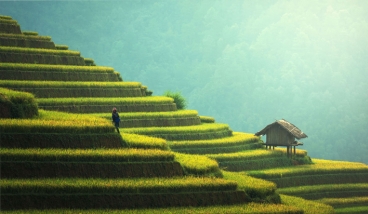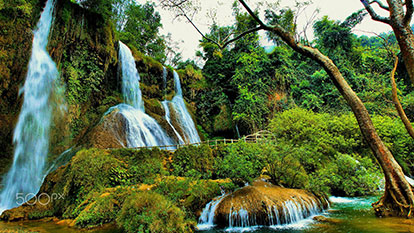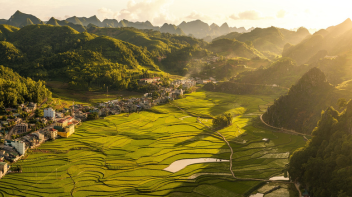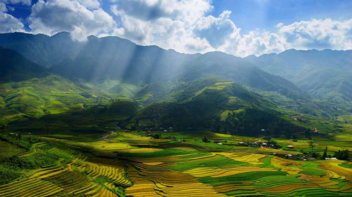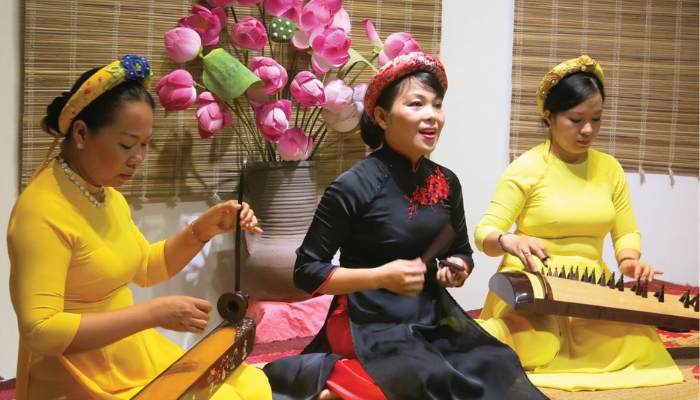Travel guide to Ba Be National Park Vietnam in Bac Kan province
Ba Be National Park, located in Bac Kan Province, is one of the most outstanding nature destinations in Northern Vietnam. With its majestic landscapes, rich biodiversity, and the unique culture of local ethnic minorities, Ba Be National Park attracts thousands of visitors each year. If you’re planning to explore unspoiled nature and experience authentic local life, this guide will serve as your complete travel guide to Ba Be National Park, covering everything from A to Z to help you make the most of your trip to Ba Be!
1. About Ba Be National Park
Located about 250 kilometers north of Hanoi and 50 kilometers from Bac Kan City, Ba Be National Park lies within Ba Be District, Bac Kan Province. It is one of the most attractive ecotourism destinations in Northern Vietnam. With pristine landscapes, a fresh climate, and rich biodiversity, Ba Be National Park is often referred to as the “green lung” of the Viet Bac mountainous region.
The park spans across seven communes of Ba Be District. Its core zone covers 7,610 hectares, divided into four functional areas: a largely undisturbed limestone forest area of 3,226 hectares; a wildlife habitat area home to rare species such as langurs; a 3,623-hectare ecological restoration area; and a 450-hectare special-use zone dedicated to scientific research and administrative management. In addition, the park includes a buffer zone of approximately 42,000 hectares.
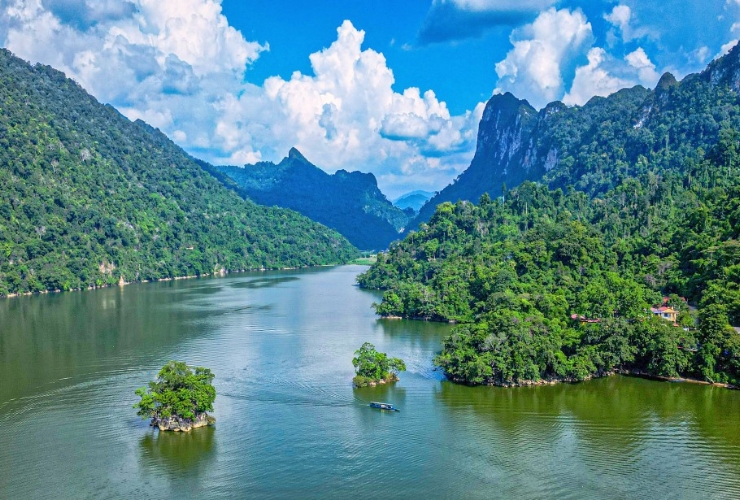
The highlight of Ba Be National Park is the complex of rivers, lakes, and forests nestled in a limestone mountain terrain. The ecosystem is nourished by three major rivers - Ta Han, Bo Lu, and Leng - which flow from the south and west before merging into the Nang River in the north. This unique natural structure fosters exceptionally high biodiversity, with over 1,200 plant species and nearly 80 rare animal species, many of which are listed in the Vietnam Red Data Book.
The flora and fauna of Ba Be National Park are both abundant and diverse. According to scientific surveys, the park is classified as Category A in terms of biodiversity. The cool climate year-round, clean air, and scenic landscapes make this place a must-visit stop on any Bac Kan tour.
In addition to Ba Be Lake - the largest natural freshwater lake in Vietnam - Ba Be National Park also boasts magnificent natural sites and traditional ethnic villages. Visitors have the chance to immerse themselves in nature, enjoy a range of outdoor activities, and explore the cultural heritage of local ethnic groups such as the Tay, Dao, and Hmong.
So, what makes traveling to Ba Be National Park so special? When is the best time to visit, what to eat, and how to plan your journey? Let’s explore it all in the detailed travel guide below!
2. Top attractions in Ba Be National Park
2.1. Ba Be Lake
Ba Be Lake is the largest natural freshwater lake in Vietnam, renowned for its emerald-green water and breathtaking mountain scenery. Surrounded by limestone mountains, caves, and underground streams, the lake offers a wild and enchanting atmosphere. It is an ideal destination for those seeking relaxation, immersion in nature, and unique outdoor adventures.
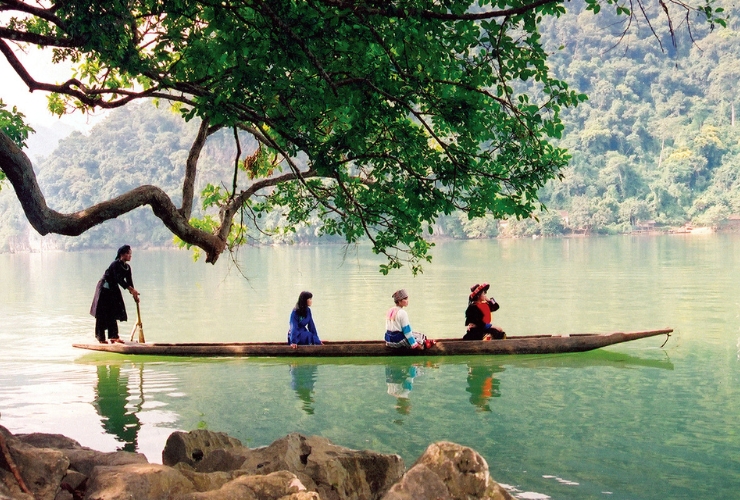
What to do in Ba Be National Park? At Ba Be Lake, visitors can go kayaking, take a motorboat ride, or try the traditional dugout canoe to fully explore the lake, discover small islands, and enjoy the peaceful ambiance of the Northeast's natural landscape. The crystal-clear water reflects the sky and forested mountains, creating a poetic and dreamlike setting. Ba Be Lake is undoubtedly one of the highlights of Ba Be National Park - perfect for relaxing, photography, and soaking in the tranquil beauty of nature.
2.2. Fairy Pond (Ao Tien)
Fairy Pond (Ao Tien) is a small hidden pond nestled deep within the old forest, not far from Ba Be Lake. Surrounded by lush trees and featuring mirror-like, calm waters that reflect the sky, this spot resembles a picturesque painting. According to legend, fairies once descended here to bathe, hence the name “Fairy Pond.” Its peaceful and romantic setting makes Fairy Pond a perfect stop for nature lovers and those who enjoy exploring Ba Be’s quiet and untouched corners.
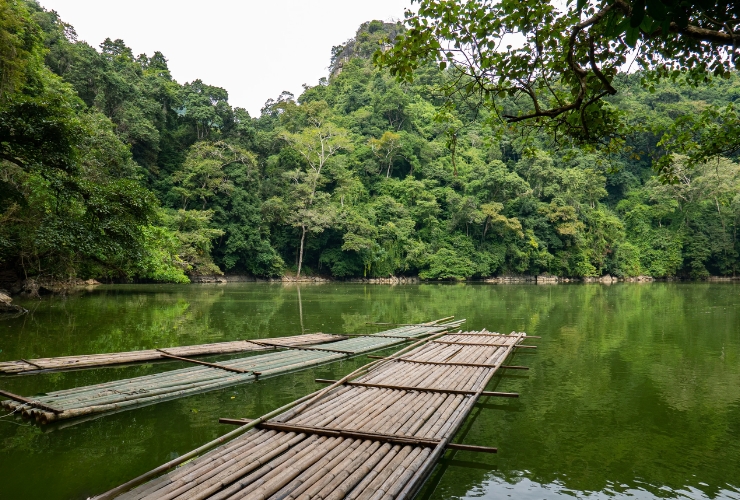
2.3. Puong Cave
Puong Cave is a large limestone cave stretching about 300 meters in length. It was carved by the Nang River as it flows through the limestone mountains, creating a magnificent and mysterious landscape. Inside the cave, you’ll find shimmering stalactites in various unique shapes and thousands of bats living in their natural habitat.
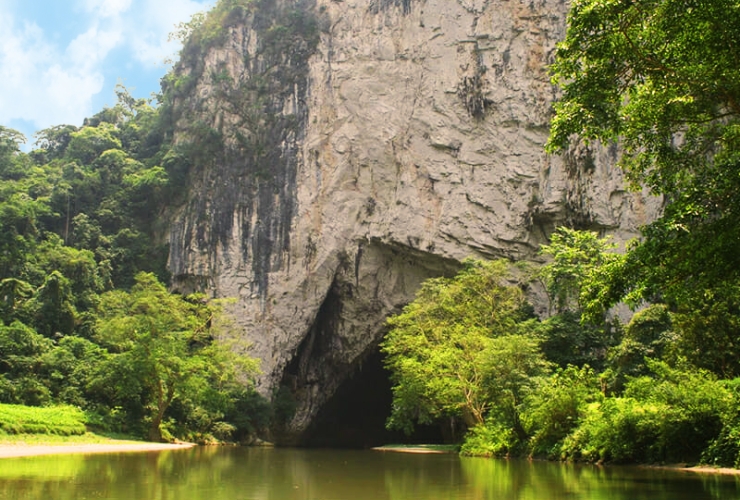
What to do in Ba Be National Park? Visitors can take a boat through the cave’s interior to admire its pristine beauty and experience the cool, tranquil atmosphere. Puong Cave is one of the most remarkable and exciting attractions in Ba Be National Park, not to be missed during your visit.
2.4. Hua Ma Cave
When visiting Ba Be National Park, don’t miss the chance to explore Hua Ma Cave, a stunning cave tucked deep within the forest. To reach the entrance, visitors must walk about 300 meters along a staircase that climbs the slopes of Co Don Mountain. Inside, the cave reveals a vast chamber adorned with impressive stalactites in various shapes, creating a mystical and captivating beauty. Still largely untouched, Hua Ma Cave is perfect for adventure seekers. According to local legend, it is a sacred site haunted by the spirits of unjust souls, adding a mysterious allure to this natural wonder.
2.5. Dau Dang Waterfall
Dau Dang Waterfall is one of the most majestic waterfalls in Ba Be National Park. It features a steep drop where the Nang River is interrupted by layers of massive boulders, creating a dramatic cascade amid the lush Northeastern forest. The raw power of the waterfall, combined with the fresh greenery surrounding it, makes it a perfect spot for nature lovers. Dau Dang Waterfall is also among the most popular stopovers on a trip to Ba Be National Park.

2.6. Ba Goa Island
Ba Goa Island is a small islet in the middle of Ba Be Lake, formed by overlapping rock formations that give it a unique shape. The island is covered in greenery and is tied to a touching local legend about a poor old woman who saved her village from a great flood. At the heart of the island stands a small shrine dedicated to the lake deity, where locals often come to pray for good weather and bountiful harvests.
What to do in Ba Be National Park? A boat trip on Ba Be Lake isn’t complete without a visit to Ba Goa Island. It’s not only an ideal photo stop, but also a place to listen to fascinating folktales and discover the cultural heritage of the region.
2.7. Ethnic Villages: Pac Ngoi and Bo Lu
A trip to Ba Be National Park offers not only breathtaking natural landscapes but also a chance to experience the unique cultural life of local ethnic minorities. Among the most popular stops are Pac Ngoi and Bo Lu, two lakeside villages that attract many visitors to Bac Kan.
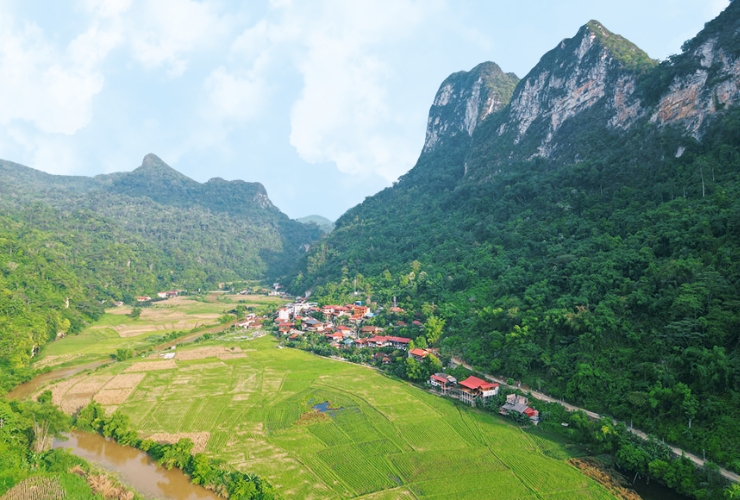
Pac Ngoi is home to the Tay people and is known for its traditional stilt houses and vibrant community-based tourism. Here, travelers can enjoy cultural activities such as Then singing, brocade weaving, traditional cooking, staying in local homestays, and tasting regional cuisine. On the other hand, Bo Lu offers a more tranquil and untouched atmosphere, ideal for those seeking peace and simplicity.
What to do in Ba Be National Park? In these two villages, visitors can take part in various outdoor activities such as kayaking on Ba Be Lake, visiting nearby natural attractions, trekking through the primeval forest, or cycling along forest trails. Beyond Pac Ngoi and Bo Lu, travelers can also explore other villages inhabited by the Dao and H’Mong people to enrich their cultural journey through Ba Be National Park.
3. Things to Do in Ba Be National Park
A trip to Ba Be National Park isn’t just about admiring the scenery - it’s also about connecting with nature and experiencing local ethnic cultures. Whether you're seeking adventure or relaxation, Ba Be offers a range of unforgettable activities.
3.1. Trekking through the forest of Ba Be National Park
What to do in Ba Be National Park? Trekking through the forest of Ba Be National Park is one of the most rewarding experiences for nature lovers and explorers. Hike along hidden trails, breathe in the fresh mountain air, and immerse yourself in the tranquil sounds of the forest.
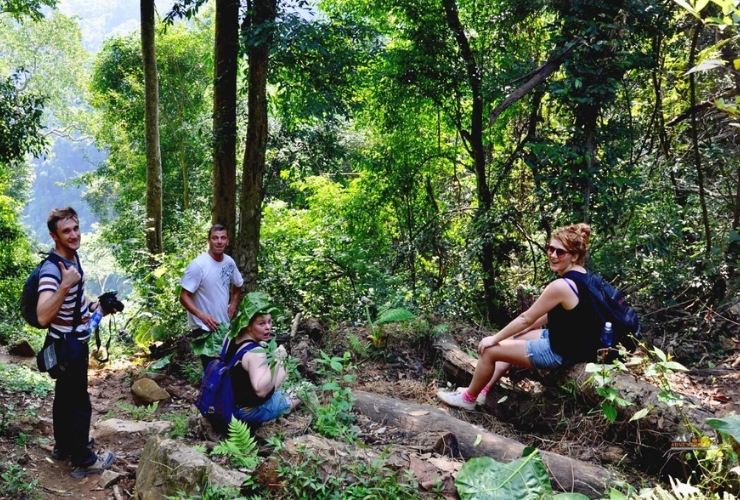
The trekking routes lead you through lush primary forests, terraced rice fields, crystal-clear streams, and ethnic minority villages. Along the way, you’ll witness spectacular limestone mountains, green valleys and shimmering views of Ba Be Lake. You may even encounter rare wildlife such as gibbons, long-tailed macaques, and endemic bird species.
3.2. Boating on Ba Be Lake
With its rich ecosystem of lakes, rivers, and mountains - centered around the magnificent Ba Be Lake - no trip to Ba Be National Park is complete without a boat ride. Choose from motorboats, kayaks, SUPs, or traditional dugout canoes paddled by Tay locals. As you glide over the calm, emerald waters, enjoy the serene beauty of jungle-covered mountains mirrored on the lake, drift through caves and around tiny islands, and soak in the peaceful ambiance of northern Vietnam’s wild landscapes.

3.3. Camping and homestay experiences
What to do in Ba Be National Park? For those seeking a deeper connection with nature, camping or staying in a traditional stilt house is top best things to do in Ba Be National Park. Spend the night in a Tay homestay by the lake or nestled on a hillside, and enjoy authentic experiences like traditional cooking, fishing, or joining local festivals.

Camping at scenic spots such as the riverbank at the end of the Leng River, Lac Nga Garden, or Puong Cave offers a chance to enjoy outdoor meals and fall asleep to the sounds of the forest. These immersive experiences allow you to truly connect with Ba Be’s untouched nature and welcoming communities.
3.4. Join ethnic festivals and cultural experiences
If you visit Ba Be during spring or on special cultural occasions, you may witness vibrant ethnic festivals such as the Long Tong Festival (Tay people), the Nang Hai Festival, or the Land and Water Processions praying for good harvests. Other significant celebrations include the Mu La Festival (H’Mong people) and the Cap Sac Ceremony (Dao people).
What to do in Ba Be National Park? Participating in these festivals lets you dive into the rich cultural heritage of the region. Enjoy traditional dances, folk songs, and ethnic dishes while gaining a deeper appreciation for the spiritual and communal life of the highland ethnic groups.
4. What to eat in Ba Be National Park?
Ba Be is home to five ethnic groups, each contributing to a diverse and flavorful culinary scene that reflects the traditions and close relationship between the people and nature of Bac Kan’s mountains. Local dishes are crafted from fresh, native ingredients and prepared using time-honored methods passed down through generations.
Travelling to Ba Be National Park, experiencing the local cuisine here isn’t just about tasting delicious food - it’s also an opportunity to understand the culture, customs, and heartfelt hospitality of the people. Food is an essential part of discovering the unique charm of Ba Be.
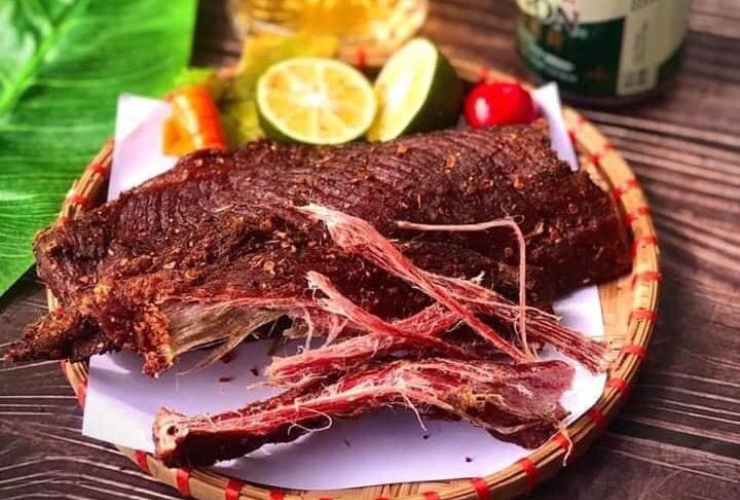
| Don’t miss these local specialties when visiting Ba Be National Park:
- Grilled fish from Pac Ngoi - Fragrant and flavorful, freshly caught and cooked over fire.
- Sour fermented shrimp - A delicacy with a distinct tangy taste.
- Smoked pork - A mountain specialty rich in smoky aroma.
- Smoked sausages - Preserved and dried in traditional kitchens.
- Sticky rice from upland fields - Soft, fragrant, and filling.
- Mugwort sticky rice cake and traditional “Sky Cake” - Ethnic treats made during festivals and celebrations.
5. Best time to visit Ba Be National Park
Ba Be National Park enjoys a pleasant climate year-round, with each season offering its own charm. However, the best time to visit Ba Be National Park is from March to May, when nature is in full bloom, the lake is crystal clear, and the mild weather is perfect for outdoor activities like hiking and sightseeing.

Autumn (September to October) is also a great season to visit Ba Be National Park. The forests are painted in golden hues, the air turns crisp, and the entire landscape becomes calm and serene. Boating on the lake or trekking through the forest during this time is especially enjoyable, offering a peaceful yet vivid experience.
Whether you're exploring in spring or fall, Ba Be National Park’s natural beauty and tranquil atmosphere are sure to leave a lasting impression.
6. How to get to Ba Be National Park Bac Kan
Located about 230 km from Hanoi, Ba Be National Park is accessible via various transportation options, depending on your preferences and travel plans:
- Private car or motorbike: This is a popular choice for travelers who prefer flexibility and adventure. The most common route follows the Hanoi - Thai Nguyen Expressway (New QL3), then continues on National Road 3 through Bac Kan to Ba Be District. From the Phu Thong junction, turn onto Provincial Road 258 and continue for about 40 km to reach Ba Be Lake. The total journey takes around 5-6 hours.
- Public bus: An economical and convenient option to reach Ba Be National Park. You can catch a bus from My Dinh or Gia Lam Bus Station in Hanoi to Bac Kan City. From there, take a taxi or motorbike taxi for the remaining 40 km to Ba Be. Some transport companies also offer direct buses to Ba Be, typically 16- to 30-seat minibuses, which are more time-saving and convenient.
7. Travel tips for visiting Ba Be National Park
- Pack suitable clothing and gear: Don’t forget to bring comfortable walking shoes, a raincoat in case of sudden weather changes, and insect repellent to protect your skin while exploring the forests and lake of Ba Be National Park.
- Follow environmental regulations: Respect the natural surroundings by not littering and avoiding any actions that could damage the pristine beauty of Ba Be National Park.
- Respect local culture: When interacting with ethnic minority communities in Ba Be, be polite, respect local customs, and avoid inappropriate behavior to show cultural sensitivity.
- Carry enough cash: Since ATMs and card payment services are limited in the Ba Be area, it's best to bring sufficient cash for all expenses during your trip to Ba Be National Park.
- Travel in a group or with a local guide: For safety and a deeper understanding of the area’s culture and nature, consider traveling with a group or hiring a local guide when exploring Ba Be National Park.
Ba Be National Park is an ideal destination for those who love nature, want to explore local culture, and experience exciting outdoor activities. What makes Ba Be National Park travel so attractive? What to do in Ba Be National Park? What to eat in Ba Be National Park? All these questions are answered in this article. We hope that this A-to-Z travel guide to Ba Be National Park provides you with useful information to help you fully prepare for your next trip to Ba Be. If you need further advice about Ba Be tour or related services, don’t hesitate to contact Galatourist for quick support!
Sincerely yours & see you soon!
GALATOURIST since 2005.
Testimonials

Ms. Francesca Tronconi & Mr Vizzolini Davide (2pax) from Spain

Mrs & Mr. DUPUIS (2pax) from United States

Mr. Jeffrey Szymanski (2pax) from United States

Mrs Rosemary McGuinness (2pax) from Australia

Mrs Elena Maria Sanchez (2pax) from Spain

Group Marissa (4pax) from United States

Mr Jerzy (2pax) from Canada








